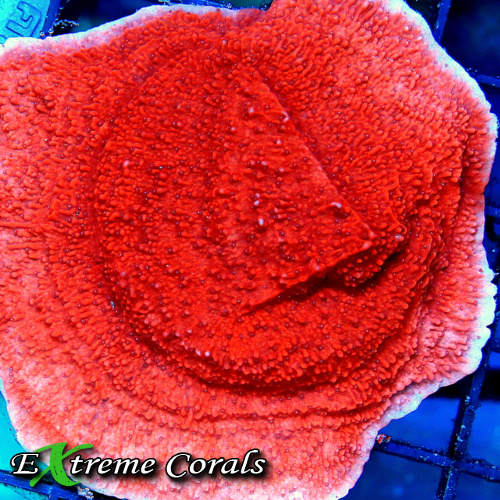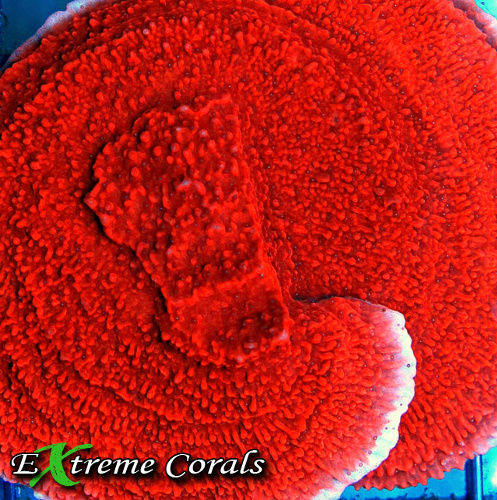Extreme Corals News and Updates
Montipora Corals: Unraveling the Mystery of Their Vibrant Colors
Discover the vibrant colors of Montipora corals in our exploration of 'Unraveling the Mystery of Their Vibrant Colors.'
Journey into the world of Montipora corals, renowned for their stunning colors and adaptability. Explore the importance of vibrant hues, diverse types, and factors shaping their coloration. Gain insights into maintaining optimal conditions for these corals and enhancing their coloration, appreciating their beauty and ecological significance in reef ecosystems.
by scott Shiles • March 29, 2024
Overview of Montipora Corals

Montipora corals are known for their stunning array of vibrant colors, making them a popular choice for reef enthusiasts. These corals belong to the SPS (small polyp stony) coral family, characterized by their tiny polyps that build intricate calcium carbonate skeletons. Montipora corals are diverse in appearance, ranging from encrusting forms to branching structures. They are relatively hardy and adaptable to various tank conditions, making them a great addition to both beginner and experienced reef-keepers. Some species of Montipora corals can also exhibit rapid growth under the right conditions, helping to fill in empty spaces in the reef aquarium.
Importance of Vibrant Colors
Bright colors in Montipora corals are essential for attracting prey and communicating with other marine life. The vibrant hues serve as a signal to attract small fish and other organisms that the coral uses as a food source. The colors also play a role in the coral's ability to defend itself and establish relationships with beneficial algae that help it thrive.
Types of Montipora Corals
There are various types of Montipora corals, each with its own unique characteristics. Some common types include:
Montipora Digitata: Known for its branch-like structures and vibrant colors.
Montipora Capricornis: Recognized for its small polyps and diverse color variations.
Montipora Setosa: Characterized by its fuzzy appearance and fast growth rate.
Montipora Spongodes: Notable for its encrusting growth form and bright colors.
Montipora Danae: Features a distinctive plate-like growth pattern and can exhibit different hues under varying light conditions.
Factors Influencing Coloration
Montipora corals get their vibrant colors from different factors. Light plays a significant role in enhancing and maintaining their colors. The type of light, such as intensity and spectrum, can affect how vivid the colors appear. Additionally, water quality is crucial for the health of the corals, which in turn impacts their coloration. Certain nutrients, like calcium and magnesium, also contribute to the vibrant hues of Montipora corals. Lastly, genetic factors play a role in determining the specific colors and patterns seen in these corals.
Understanding Pigmentation Mechanisms
Montipora corals get their vibrant colors from pigments produced by tiny algae called zooxanthellae living inside their tissues. These pigments play a crucial role in photosynthesis, the process by which corals create energy from sunlight. The specific colors you see in Montipora corals are a result of the combination of pigments present in the zooxanthellae.
Coral Health and Coloration
Coral health is crucial for vibrant colors. To maintain their bright hues, corals need proper lighting, water flow, and nutrients. When corals are healthy, they display a wide range of colors, from blues and purples to vibrant pinks and yellows. Adequate water quality, stable temperatures, and optimal nutrition all play a role in keeping corals colorful and thriving. Regular water testing and monitoring can help ensure that your corals remain healthy and display their full spectrum of colors.
Maintaining Optimal Conditions
To keep Montipora Corals healthy and vibrant, it's crucial to maintain optimal conditions in your aquarium. Here are some key points to consider:
Water Quality: Monitor and maintain proper water parameters such as temperature, salinity, and pH levels to ensure the corals thrive.
Lighting: Provide appropriate lighting to support photosynthesis and promote colorful pigmentation in the corals.
Water Flow: Ensure sufficient water flow to prevent debris buildup and facilitate nutrient distribution to the corals.
Nutrient Levels: Keep nutrient levels in check to prevent overgrowth of algae, which can compete with corals for resources.
Regular Maintenance: Perform regular water changes, clean equipment, and monitor coral health to address any issues promptly.
By maintaining these optimal conditions, you can enjoy the beauty of Montipora Corals in your aquarium for a long time.
Enhancing Coloration in Montipora Corals
To enhance the coloration in Montipora corals, consider providing the following factors:
Lighting: Ensure proper lighting with the right spectrum and intensity to bring out vibrant hues.
Water quality: Maintain pristine water conditions to support optimal pigmentation in the corals.
Nutrient levels: Keep a balance in nutrient levels to promote healthy color development.
Temperature: Monitor and stabilize water temperature within suitable ranges for vibrant colors.
Compatibility: Select suitable tank mates to prevent stress and enhance coral color.
Common Color Varieties
Montipora corals display a wide array of vibrant colors in the ocean. Some common color varieties you may come across include purple, green, orange, red, pink, and yellow. These colors are influenced by factors such as the coral's environment, the presence of symbiotic algae, and genetics. Each color variation adds to the beauty and diversity of these fascinating marine creatures.
Appreciating Montipora Corals
Montipora corals come in a variety of colors due to the pigments they contain, which give them their vibrant appearance. These corals are unique in their ability to thrive in different environments, making them popular among marine enthusiasts. By appreciating the beauty and diversity of Montipora corals, we can better understand and protect these delicate organisms in our oceans.

